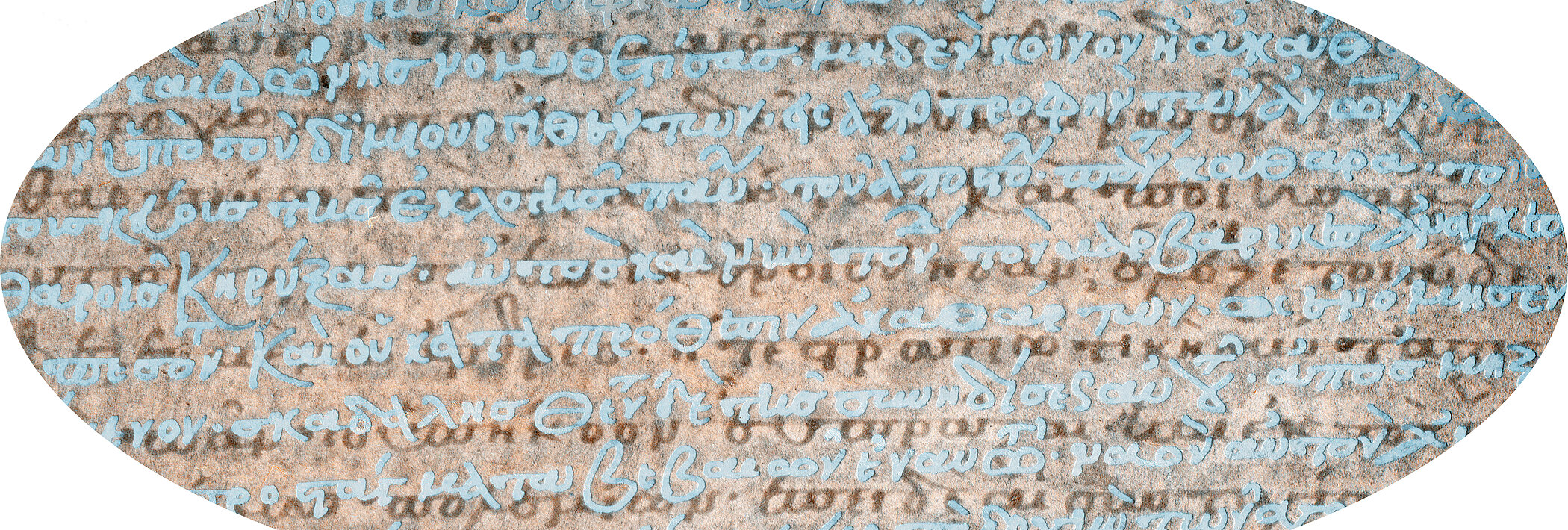Scythica Vindobonensia

♦ ♦ ♦ Projects ♦ ♦ ♦
♦ The Scythica Vindobonensia were discovered in 2007–2009 by Jana Grusková during a research project of the Austrian Academy of Sciences, which focused on Greek palimpsests of the Austrian National Library (ANL) in Vienna and was led by Otto Kresten (Byzanzforschung). She deciphered about 15% of the text and identified it as probably coming from Dexippus’ Scythica (see Untersuchungen, 2010, 51–53).
♦ In 2012, a new research project started, "Important textual witnesses in Vienna Greek palimpsests" (P 24523-G19), which was funded by the Austrian Science Fund (FWF). Its objective was to examine – among other valuable palimpsests of the ANL – the Scythica Vindobonensia (see GLO 2012, 75-77). The project was led by Otto Kresten and hosted at the Austrian Academy of Sciences, Division of Byzantine Research (ABF of the Institute for Medieval Research, IMAFO). Jana Grusková together with Gunther Martin, a specialist on Dexippus, deciphered 60% of the palimpsest in the Codex Vind. hist. gr. 73 (fols. 192r–195v) and, in 2014–2015, published six pages (of the eight in total) in a provisional transcription along with a translation and some initial observations on the text. Cutting-edge methods of digital recovery of erased writings (multispectral imaging and special image processing) were applied in cooperation with the Early Manuscripts Electronic Library (EMEL) to make the original manuscript visible (⇒).
♦ Subsequently, in order to reveal and decipher the remaining 40% of the palimpsest and prepare a critical and commented edition, Kresten, Grusková and Martin together with Fritz Mitthof, a specialist in Ancient history, applied to the FWF for new funding.
The project "Scythica Vindobonensia" (P 28112-G25) started in 2015. It was led by Fritz Mitthof and Otto Kresten and conducted at both the University of Vienna (Department of Ancient History, Papyrology and Epigraphy) and the Austrian Academy of Sciences (ABF, Byzantine research). Jana Grusková and Gunther Martin continued their work on further deciphering and editing the new text. Additional state-of-the-art methods of digital recovery, including XRF element mapping, were applied to make the previously illegible parts of the palimpsest legible. In addition, extended studies on selected historical, prosopographical, epigraphical and geographical aspects were published by Fritz Mitthof and Olivier Gengler. Moreover, scholars from various fields have been invited to explore the new fragments in their historical and historiographical contexts, from the Roman to the Byzantine Era. An international conference "Empire in crisis: Gothic invasions and Roman historiography" was organized on 3 to 6 May 2017 in Vienna and important questions were discussed and settled. The proceedings volumeEmpire in Crisis was published in 2020 (TYCHE Supplementband 12, Wien: Holzhausen Verlag). Leading specialists in Greek palaeography were brought in to discuss and settle the problematic issues of palaeography, codicology and book history of the Vienna palimpsest: a colloquium of them and the two editors took place on 7–8 May 2017 in Vienna.
The work on the Scythica Vindobonensia alias Dexippus Vindobonensis continues. The critical edition will be published as soon as the complex process of digital recovery and the decipherment of the faint surviving traces of the erased text, covered by another script, have been completed and the newly revealed passages have been examined (see Scholarship).